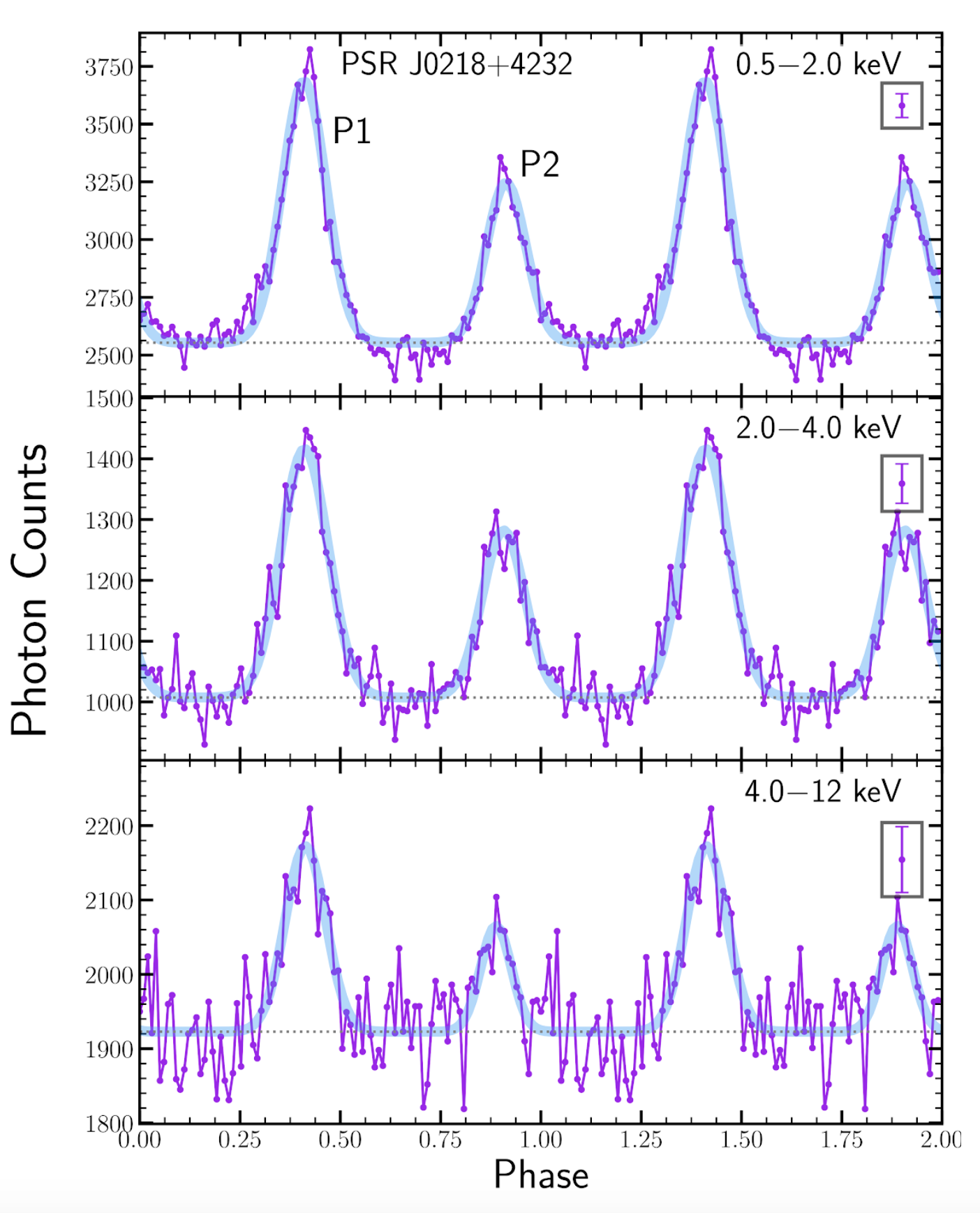NICER / ISS Science Nugget
for February 13, 2020
New paper shows profile shifts in PSR J0218+4232
For over two years, NICER has been regularly observing three
rotation-powered millisecond pulsars (MSPs): PSRs B1937+21, B1821-24,
and J0218+4232. NICER receives a pulse, across the electromagnetic spectrum,
from these fast-spinning neutron stars for each rotation, but the
mechanisms responsible for pulsar emissions remain poorly understood.
NICER's observations enable detailed analyses of the X-ray emission
properties of these MSPs thanks to the payload's high timing accuracy
and large collecting area. This means that, rather than constructing
just one pulse profile averaged over a broad band of X-ray energies, we
can construct profiles (or "lightcurves") within multiple energy ranges
(see Figure). We model these energy-resolved lightcurves to observe the
energy dependence of the pulse morphology.
For one of our pulsars, PSR J0218+4232, we find that the separation
between its two peaks decreases
with increasing photon energy. For the others, we find the separation is
remarkably stable across the NICER X-ray energy band. The measurements
fit well with an emerging model for magnetospheric pulsar emission,
known as the current sheet model.

Figure:
X-ray brightness variations (or "pulse profiles", purple points) are
seen as the "lighthouse" beams of PSR J0218+4232 swivel into and out of
our line of sight at a rate of 430.5 revolutions per second. Three
ranges of X-ray photon energy within the overall NICER band are shown in
the three panels. The two brightness peaks (labeled P1 and P2) vary
slightly in strength and relative phase as a function of energy. Model
fits to the peaks are shown by the blue traces, and the dotted
horizontal lines indicate the estimated background level.
These results, in a paper led by
Haverford College undergraduate Dominic Rowan, have been accepted for
publication in The Astrophysical Journal.
<< Previous
Main Index
Next >>